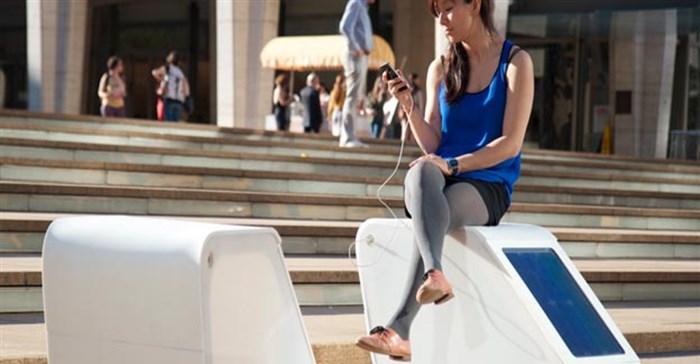





One trend that has amplified this change is the evolution of street furniture across the globe. The days of benches being the only prominent fixtures has long been surpassed, making way for creatives to apply not only the latest designs, but technology to enhance these offerings and expand their functionality.
With the need of modern city dwellers to always be connected and have their electronic devices ready to use, the answer to this call soon emerged on the streets.
“Seat-e” benches were for example installed in Boston, Massachusetts. These trendy seating solutions with plug-points were created to harness solar power, enabling people to conveniently charge their mobile phones while out and about.

South Africans in some of the country’s bigger metropoles can also enjoy the convenience of smart benches – thanks to the Isabelo initiative. These solar powered structures offer free wifi and four cellphone charging ports.
Equally beneficial are NRG Street Charge Stations - solar powered structures that can be found from America to Australia. Driven by the passion to give citizens “clean, environmentally friendly power”, the team behind these creations fashioned unobtrusive, clean-cut devices that also offer businesses branding opportunities.
The Water Bench took bench design even further. Lauded as “the first prototype in a series of water-conservation solutions”, it was developed by MARS Architects in collaboration with the BMW Guggenheim Lab in Mumbai. The Water Bench, provides both a seating solution as well as a vessel for collecting rainwater during the rainy seasons that could be used to irrigate smaller gardens during drier periods.
Although not necessarily seen as street furniture, but nevertheless showing how design and conservation can seamlessly meld together, was a billboard constructed in Peru. Made by students of UTEC and Mayo DraftDCB, this billboard extracted water from the air – the world’s first billboard of this kind to produce potable water by sourcing it from the atmospheric humidity.

Several cities embrace the pastimes of their citizens with convenient solutions.
Urban property development brand, Blok, initiated a bicycle parking design competition to provide a system on the Sea Point Promenade. The winning design, Blade, resembles blades of grass reaching up from the ground and enables cyclists to simply secure the frame of their bikes to one of the 16 blades with a lock.
Several Capetonians in this area are avid cyclers. By giving them a safe place to store their bicycles, they have peace of mind that their rides are secure while they exercise on the promenade and explore the surrounding restaurants, putt-putt course and shops.

In Amsterdam, Pivot Creative, through attaching red metal clips to benches, transformed these ordinary structures into mini-libraries – dubbed “Ruilbank”. Bringing this initiative to life included partnering with newspapers and libraries for reading material for the various benches.
By shaping the way the public experience their surroundings through clever structures and improved street furniture, cities can easily inspire their inhabitants to get social and active.
Furthermore, designs inspired by a city’s culture will give rise to an environment that invites its citizens to celebrate the streets and all they have to offer.